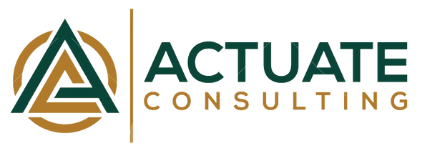Managing Conflict Like a Pro: The Role of Personality and Culture
Michael prided himself on being a strong leader.
As the manager of a global team, he focused on results, deadlines, and efficiency. But lately, something was off.
His team was constantly arguing over small things.
🚧 Meetings turned into debates.
🚧 Emails sounded passive-aggressive.
🚧 Some employees stopped speaking up.
The tension was slowing progress and hurting morale.
Michael didn’t get it—
💬 Why were small disagreements becoming major conflicts?
💬 Why couldn’t they just focus on their work?
Then, one day, the situation exploded.
Wake-Up Call: The Meeting That Changed Everything
During a strategy meeting, two employees—Maria and James—got into a heated argument.
🔥 Maria (from a collectivist culture) valued team decisions and harmony.
⚡ James (from an individualist culture) valued directness and personal accountability.
James openly criticized Maria’s idea, thinking he was being constructive.
Maria, feeling disrespected and unheard, shut down completely.
Suddenly, the meeting room felt like a battlefield.
After the meeting, a colleague pulled Michael aside and said:
“Michael, you keep pushing for solutions, but you’re missing something—personality and culture are shaping these conflicts.”
That was the moment everything clicked.

The Transformation: Learning to Manage Conflict with DISC and Cultural Awareness
Determined to fix the problem, Michael enrolled in a Leadership & Conflict Resolution course and discovered two game-changing insights:
1️⃣ DISC Personality Types Impact Conflict Resolution
💠 Dominant (D) personalities are direct and assertive.
💠 Influential (I) personalities want enthusiasm and recognition.
💠 Steady (S) personalities prefer harmony and avoid conflict.
💠 Conscientious (C) personalities focus on logic and facts.
Michael realized that James was a high-D (bold and direct), while Maria was a high-S (reserved and relationship-focused).
Their conflict wasn’t just about opinions—it was about how they communicated.
2️⃣ Cultural Differences Shape Team Dynamics
🌍 Some cultures value group harmony over individual expression.
🌍 Others see direct criticism as a sign of honesty.
Michael had ignored these differences—and it was hurting his team.
The Comeback: Putting the Training into Action
With his new knowledge, Michael changed the way he led his team:
✅ He held a DISC workshop to help his team understand their personality styles.
✅ He introduced cultural awareness training to help employees respect different communication styles.
✅ He set clear conflict resolution guidelines, ensuring that everyone felt heard and valued.
At the next meeting, something incredible happened.
💡 James and Maria had a disagreement—but this time, they handled it differently.
James rephrased his feedback in a way that felt collaborative.
Maria voiced her perspective confidently without shutting down.
The energy in the room shifted. The team was communicating, not clashing.
Michael finally saw it: Managing conflict isn’t about stopping disagreements—it’s about navigating them effectively.
Your Turn: Are You Ready to Lead Conflict Like a Pro?
🚀 Do workplace conflicts drain your team’s productivity?
🚀 Want to learn how DISC and cultural awareness can transform communication?
🚀 Ready to build a team that thrives, even in disagreement?
📢 Join our Conflict Resolution Masterclass and turn tension into teamwork!

Looking forward to helping you step into your full leadership potential.
Best regards,

Checree Bryant
CEO Actuate Consulting





